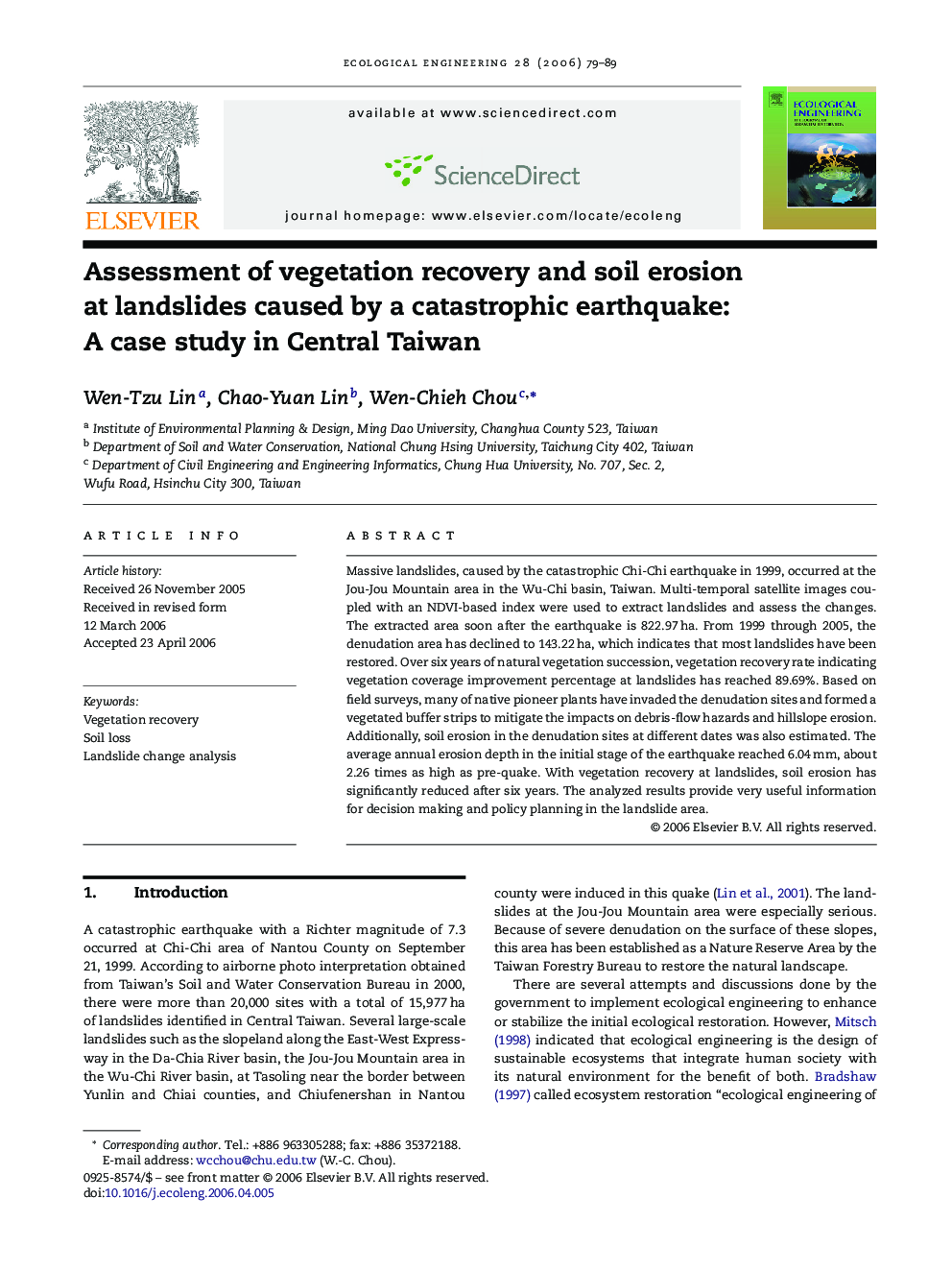| Article ID | Journal | Published Year | Pages | File Type |
|---|---|---|---|---|
| 4391255 | Ecological Engineering | 2006 | 11 Pages |
Massive landslides, caused by the catastrophic Chi-Chi earthquake in 1999, occurred at the Jou-Jou Mountain area in the Wu-Chi basin, Taiwan. Multi-temporal satellite images coupled with an NDVI-based index were used to extract landslides and assess the changes. The extracted area soon after the earthquake is 822.97 ha. From 1999 through 2005, the denudation area has declined to 143.22 ha, which indicates that most landslides have been restored. Over six years of natural vegetation succession, vegetation recovery rate indicating vegetation coverage improvement percentage at landslides has reached 89.69%. Based on field surveys, many of native pioneer plants have invaded the denudation sites and formed a vegetated buffer strips to mitigate the impacts on debris-flow hazards and hillslope erosion. Additionally, soil erosion in the denudation sites at different dates was also estimated. The average annual erosion depth in the initial stage of the earthquake reached 6.04 mm, about 2.26 times as high as pre-quake. With vegetation recovery at landslides, soil erosion has significantly reduced after six years. The analyzed results provide very useful information for decision making and policy planning in the landslide area.
